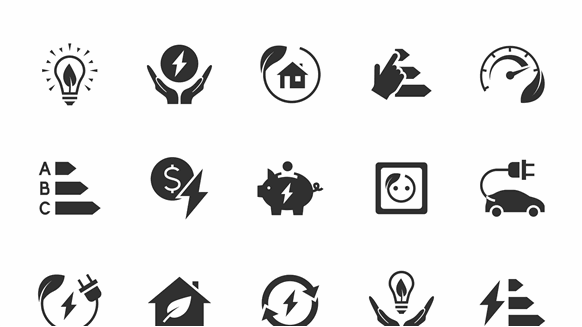The US Department of Energy (DOE) has opened applications for $400 million in grants to state governments to implement building energy codes that improve efficiency and reduce emissions.
“Homes built to today’s energy codes are nearly 40 percent more efficient than homes built just 15 years ago, dramatically reducing energy costs for consumers,” the DOE noted in a recent press release that announced the funding of the formula. “If all states updated to the most recent energy codes, over 30 years, this action would save enough energy to power all US homes for a full year. The change to the updated energy codes would equate to nearly 2 billion metric tons of CO2 [carbon dioxide] emissions reduction, the equivalent of taking more than 445 million gas cars off the road over the same 30 years.”
The bulk of the grants, $240 million, are for implementing the 2021 International Energy Conservation Code (IECC) for residential buildings and the ANSI/ASHRAE/IES 90.1-2019 standard for commercial buildings or other codes that achieve at least an equivalent energy. savings The remaining $160 million is for implementing the zero energy provisions of the IECC or other codes that achieve the same results.
In a previous analysis, DOE said adopting the 2021 IECC results in energy savings of 8.79 percent, site energy savings of 9.38 percent, and cost savings energy of about 8.66 percent for the national average residential buildings. “States can experience significant benefits by updating their codes to reflect current building standards, totaling an estimated $74.61 billion in energy cost savings and 424.20 MMT. [million metric tons] of CO2 emissions avoided in residential buildings (cumulative from 2010 to 2040), or $3.24 billion in annual energy cost savings and 18.50 MMT in annual CO2 emissions avoided (annually by 2030),” said the DOE in report for analysis published July 19. 2021.
Energy Secretary Jennifer M. Granholm said in a statement about the grants: “A transition to a clean energy economy is about more than adding clean energy to the power grid; we must also revitalize and strengthen infrastructure that we have now.”
The DOE announcement said the funding allows states to “be supported to adopt, implement, enforce and measure compliance rates for specified building energy codes, while training and educating their workforce and building localized capacity “.
“These activities will improve new residential and commercial construction and major renovations, and help transition infrastructure in these states to include more efficient and more resilient decarbonized buildings for all,” the DOE added.
States must submit a letter of intent by Nov. 21 to be considered for funding, according to the DOE, which administers the grants through its Office of State and Community Energy Programs.
“This program advances President Biden’s Justice40 initiative, ensuring that 40 percent of the overall benefits of federal clean energy investments make a difference in energy-burdened and disadvantaged communities,” the DOE said. The initiative, which President Joe Biden signed into law on January 27, 2021, aims to direct 40 percent of the profits from certain investments, including those in clean energy and housing, to disadvantaged communities.
“This [the funding on offer] also aligns with President Biden’s National Initiative to Advance Building Codes, which is accelerating the adoption of modern building codes that protect people from extreme weather events and save communities an estimated $1.6 billion annually in harm avoided,” the DOE added.
The DOE said it intends to offer supplemental competitive funding to “provide direct support to states and local governments with code adoption authority for more innovative code approaches, including construction performance standards, in the following months”.
The grants are funded by the Inflation Reduction Act, which provides $1 billion for the adoption of energy-efficient building codes.
To contact the author, please email jov.onsat@rigzone.com


